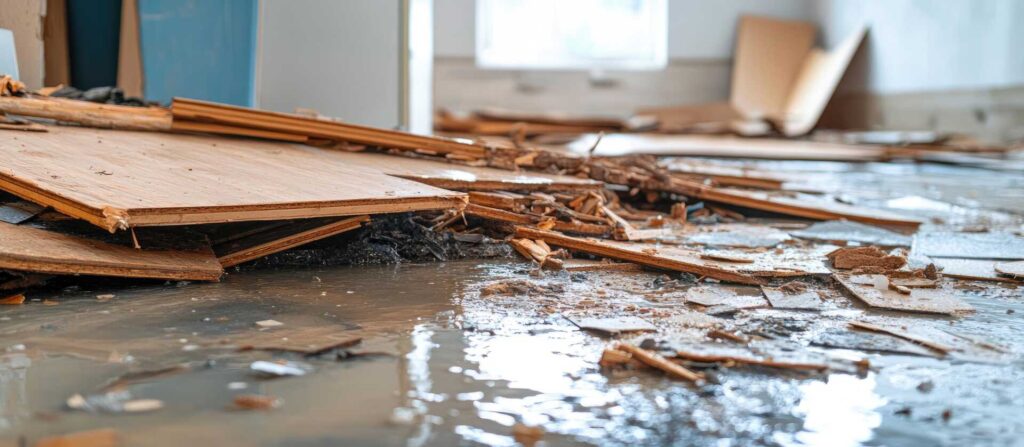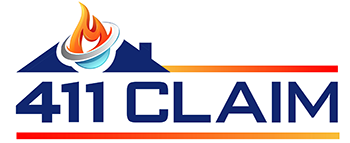
Contents
In recent cases of water damage restoration, teams have successfully utilized thermal imaging to pinpoint moisture sources quickly. This is just one example of how advanced technologies are reshaping the industry. As we look toward 2025, you’ll find that innovations like drone assessments and AI-driven predictive analyses are set to revolutionize restoration practices. But what does this mean for efficiency and environmental impact in your operations?
Key Takeaways
- Integration of thermal imaging and drone technology will enhance rapid damage assessments, improving accuracy and efficiency in identifying structural issues.
- The use of eco-friendly restoration materials will become standard, reducing environmental impact and promoting healthier indoor environments.
- AI-driven predictive damage analysis will empower restoration professionals to anticipate issues before they occur, optimizing resource allocation and minimizing waste.
- Real-time monitoring systems utilizing IoT devices will facilitate immediate awareness of conditions, streamlining workflows and ensuring effective restoration processes.
- Automated restoration equipment will increase efficiency and precision, reducing labor costs while allowing teams to focus on complex restoration tasks.
Advances in Thermal Imaging Technology
How can advances in thermal imaging technology revolutionize damage restoration? By utilizing cutting-edge thermal imaging applications, you can greatly enhance your damage assessment processes. Infrared detection methods allow you to identify hidden moisture, heat loss, or structural issues that traditional inspection methods might overlook. This capability speeds up the evaluation and improves the accuracy of your findings.
When you employ this technology, you’re not just diagnosing problems; you’re also fostering a proactive approach to restoration. You can detect issues before they escalate, saving time and resources.
Plus, the visual data thermal imaging provides can help you communicate effectively with clients, ensuring everyone understands the necessary steps for restoration.
Incorporating thermal imaging into your toolkit means you’re joining a community focused on innovation and excellence in damage restoration. Embrace these advancements, and you’ll elevate your service, making a real difference in your client’s experience.
Integration of Drones for Damage Assessment
Building on the advancements in thermal imaging technology, the integration of drones for damage assessment further enhances your ability to evaluate properties efficiently and accurately.
Drone technology allows you to capture high-resolution images and videos from angles that are often difficult to reach. This capability enables you to identify structural damage, water intrusion, and other issues without the need for extensive scaffolding or ladders.
By utilizing drones, you can gather real-time data that aids in quick decision-making. The aerial perspective offers insights into the overall condition of a property, making damage assessment more thorough.
Additionally, integrating drones with thermal imaging can provide a multi-dimensional view of potential hazards, ensuring no detail is overlooked.
Embracing this innovative approach streamlines your workflow and positions you at the forefront of modern damage assessment practices, fostering a sense of community among professionals committed to excellence.
Eco-Friendly Restoration Materials
Eco-friendly restoration materials are becoming crucial in modern damage restoration practices, offering sustainable alternatives that minimize environmental impact. By choosing sustainable materials, you support eco-conscious efforts and ensure durability and efficiency in your projects.
Biodegradable options, like natural fibers and plant-based adhesives, provide effective solutions without the toxic residues common in traditional products.
Using these materials can enhance your reputation as a responsible restoration professional, allowing you to connect with clients who value sustainability. You’ll find that eco-friendly choices often lead to healthier indoor environments, reducing allergens and improving air quality.
As you embrace these innovations, you’ll join a growing community committed to preserving our planet while delivering high-quality restoration services.
Ultimately, opting for eco-friendly materials isn’t just a trend; it’s a crucial step toward a more sustainable future in the restoration industry.
Use of AI in Predictive Damage Analysis
As restoration professionals increasingly prioritize sustainable practices, the integration of artificial intelligence (AI) in predictive damage analysis is revolutionizing the field.
By leveraging predictive modeling, you can forecast potential damages before they occur, allowing for proactive measures that mitigate risks. AI algorithms analyze vast datasets, identifying patterns and correlations that human analysis might overlook. This empowers you to anticipate failures in infrastructure, equipment, or environmental factors, enhancing your decision-making process.
With advanced damage forecasting capabilities, you can allocate resources more efficiently, reducing waste and minimizing environmental impact. AI tools provide real-time insights, enabling your team to adapt quickly to evolving conditions.
As you embrace these technologies, you’re not just improving restoration outcomes; you’re fostering a culture of innovation and sustainability within your organization. By doing so, you become part of a community that values forward-thinking solutions, ultimately leading to a more resilient future for the restoration industry.
Enhanced Communication Tools for Restoration Teams
To effectively manage restoration efforts, you need to leverage enhanced communication tools that foster real-time collaboration among team members.
Utilizing mobile communication applications and centralized information dashboards can streamline information flow, ensuring everyone stays informed and coordinated.
These tools improve response times and enhance overall team efficiency during critical restoration processes.
Real-time Collaboration Platforms
In today’s fast-paced restoration industry, utilizing real-time collaboration platforms has become vital for effective communication among restoration teams.
These tools enable you to streamline project management, ensuring everyone stays on the same page. With robust collaborative software, you can share updates, assign tasks, and track progress in real-time, reducing delays and confusion.
This interconnectedness fosters a sense of belonging within your team, as each member feels valued and informed. Furthermore, these platforms enhance decision-making, allowing for prompt responses to emerging challenges.
By embracing real-time collaboration, you will improve efficiency and cultivate stronger relationships within your team, leading to successful and timely restoration outcomes.
Adopting these advanced tools is essential for staying competitive in this dynamic field.
Mobile Communication Applications
While effective restoration requires swift decision-making and coordination, mobile communication applications have emerged as essential tools for teams.
These apps facilitate real-time communication, ensuring everyone stays informed and aligned, especially when rapid responses are vital. With advancements in mobile app development, restoration teams can now utilize features like instant messaging, video calls, and location sharing to enhance their communication strategies.
This immediacy helps in quickly addressing challenges as they arise, fostering a sense of unity among team members. By leveraging these applications, you streamline your workflow and create a connected environment where every voice matters.
Embracing these tools is key to building a cohesive team capable of tackling any restoration project efficiently.
Centralized Information Dashboards
As restoration teams tackle complex projects, centralized information dashboards serve as essential tools for enhancing communication and coordination. These dashboards provide real-time data visualization, allowing you to monitor progress and identify potential issues swiftly.
By centralizing information, you eliminate confusion and ensure that everyone stays on the same page, fostering a sense of belonging among team members.
With powerful decision support features, these dashboards empower you to make informed choices based on accurate data, ultimately improving efficiency. They can integrate various data sources, giving you a thorough view of the project landscape.
Embracing these tools streamlines operations and cultivates collaboration, ensuring that your restoration efforts are effective and cohesive.
Real-Time Monitoring Systems for Restoration Progress
When implementing rapid damage restoration techniques, leveraging real-time monitoring systems can considerably enhance efficiency and accuracy. These systems provide you with real-time data that tracks the progress of restoration efforts, enabling you to make informed decisions on the fly.
By utilizing sensors and IoT devices, you can gather critical information about moisture levels, air quality, and structural integrity, ensuring no detail goes unnoticed.
With effective progress tracking, you streamline workflows and foster collaboration among team members. Everyone stays in the loop, leading to quicker problem-solving and minimizing downtime.
Plus, sharing this data with stakeholders builds trust, as they can see tangible evidence of restoration efforts.
In this fast-paced industry, adopting real-time monitoring systems isn’t just a trend; it’s a necessity. You’re not just restoring properties; you’re enhancing the entire restoration experience for everyone involved.
Virtual Reality Training for Restoration Professionals
How can virtual reality (VR) transform the training landscape for restoration professionals? VR offers an innovative way to engage in immersive training that enhances skills through realistic virtual reality simulations. By simulating real-world scenarios, you can practice damage restoration techniques without the risks associated with actual disasters. This approach builds confidence and fosters teamwork among professionals.
| Scenario | Skills Practiced | Benefits |
|---|---|---|
| Water Damage Cleanup | Assessment, Extraction | Quick, effective response |
| Fire Damage Recovery | Safety Protocols, Restoration | Improved decision-making |
| Mold Remediation | Containment, Removal | Enhanced safety awareness |
| Storm Damage Repair | Structural Assessment | Better communication |
With VR, you’re not just learning; you’re experiencing, allowing for deeper understanding and retention. This technology is reshaping how you prepare for real-life challenges in restoration.
Development of Rapid Drying Techniques
While effective restoration relies heavily on thorough drying processes, the development of rapid drying techniques has revolutionized the industry.
You’ll find that modern methods focus on enhancing moisture removal and optimizing air circulation to expedite the drying process. Techniques such as high-velocity air movers and dehumidifiers have become essential tools, allowing for a swift response to water damage scenarios.
By increasing air circulation, these devices effectively reduce humidity levels, preventing mold growth and structural deterioration.
You can also implement advanced drying mats that direct airflow beneath surfaces, ensuring a detailed approach to moisture management. Innovations such as infrared drying systems further improve efficiency, allowing you to target specific areas in need of attention.
Ultimately, these rapid drying techniques enhance the restoration process and foster a sense of community among professionals committed to delivering quality results.
Embracing these advancements will position you at the forefront of the restoration industry.
Implementation of Automated Restoration Equipment
The advancements in rapid drying techniques have paved the way for the implementation of automated restoration equipment, which greatly enhances efficiency in damage restoration processes.
You’ll find that using automated equipment, like mobile drying units and moisture meters, streamlines operations considerably. These tools minimize labor costs and boost restoration efficiency by ensuring precise moisture removal and monitoring.
As you integrate this technology into your restoration workflow, you’ll experience faster drying times and improved outcomes for clients.
Automation reduces human error, allowing your team to focus on more complex tasks that require expertise. The synergy between advanced techniques and automated solutions fosters a sense of community among restoration professionals, as everyone can rely on data-driven results.
In embracing these innovations, you’re not just enhancing efficiency; you’re also elevating industry standards, creating a shared commitment to excellence in damage restoration.
Summary
As you explore these 2025 trends in rapid damage restoration, imagine a scenario where a flood-damaged home is assessed by a drone equipped with thermal imaging, pinpointing moisture pockets within minutes. Coupled with AI-driven predictions and eco-friendly materials, restoration teams can act swiftly and sustainably. This innovative approach streamlines processes and minimizes environmental impact, setting a new standard in the industry. Embracing these advancements will elevate restoration efforts and enhance outcomes for affected homeowners.
Recent Posts
Pricing Insights for Damage Restoration Services
When unexpected events disrupt your life, steering through the costs of damage restoration can feel
Budgeting for Blaze Cleanup: A Trusty Guide
Budgeting for blaze cleanup is like steering through a maze—complex and overwhelming but attainable with
Top Storm Damage Repair Techniques for Homeowners
When storms release their fury, the aftermath of storm damage can feel overwhelming, much like
